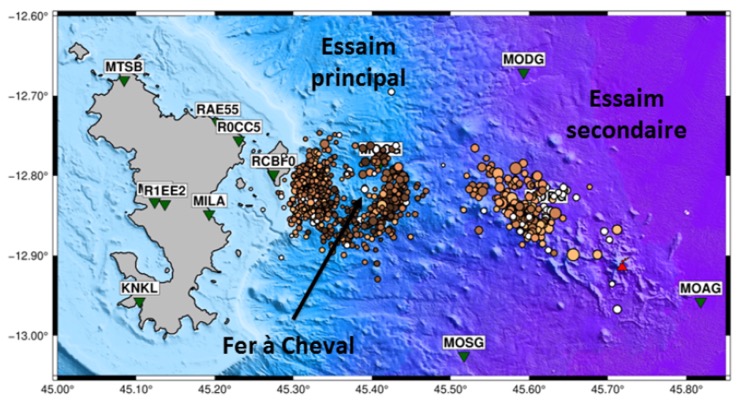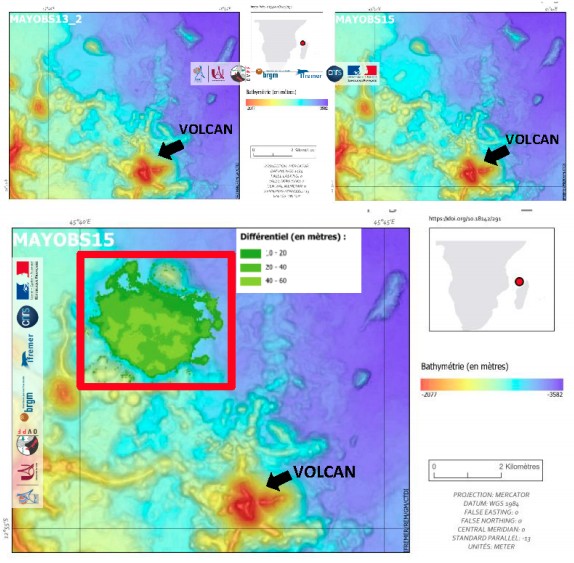New lava flows at a submarine volcano near Mayotte

New lava flows have been observed at a newly-formed submarine volcano near Mayotte during MAYOBS 15 mission from October 1 to 26, 2020. The flow extends over 6 square km (2 square miles) and is up to 60 m (197 feet) thick. 20 to 30 earthquakes also occur near the area per day as seismic activity continues for the third year in a row now. Since May 2018, when the crisis started, several thousand earthquakes have been recorded and hundreds have been felt by the population.
MAYOBS 15 mission implemented substantial observation means, in particular an autonomous underwater vehicle, and explored an area of 1 500 km2 (579 mi2) in 26 days.
New lava flows were identified northwest of the volcano, extending over 6 km2 (2.3 mi2) and up to 60 m (197 feet) thick.
"The volcano is still active," said Charlotte Mucig, director of the BRGM in Mayotte. "Two earthquake swarms are constantly observed. There are 20 to 30 earthquakes per day, which are not felt by the population."
On the primary seismic swarm closest to Mayotte, the acoustic plumes observed during past missions from the area called Fer a Cheval (Horshoe) are still present, 10 km (6 miles) east. A new plume was observed in the same place and on October 30, six plumes have been recorded.
The mission also collected sediment samples by coring in the area near Petite-Terre to find out the nature of the sediments and to specify the chronology of past geological events.

Image credit: REVOSIMA

Image credit: REVOSIMA
The island of Mayotte has been facing an unprecedented seismo-volcanic crisis since May 10, 2018, with thousands of earthquakes recorded and hundreds felt by the population ever since.
Earlier this year, authorities have planned preparations and emergency measures in case of dangerous seismic or volcanic activity near Mayotte.
Read more:
Geological background
Mayotte Island in the Mozambique Channel between the northern tip of Madagascar and the eastern coast of Africa consists of two volcanoes with diverse geochemistry that were active from the Pliocene to the Holocene. Lavas on the NE were active from about 4.7 to 1.4 million years and on the south from about 7.7 to 2.7 million years.
Mafic activity resumed on the north from about 2.9 to 1.2 million years and on the south from about 2 to 1.5 million years. Morphologically youthful-looking maars are present on Mayotte Island, and Zinke et al. (2003) found several pumice layers of Holocene age in gravity cores on the barrier reef-lagoon complex at Mayotte. (GVP)
Featured image credit: REVOSIMA

Commenting rules and guidelines
We value the thoughts and opinions of our readers and welcome healthy discussions on our website. In order to maintain a respectful and positive community, we ask that all commenters follow these rules.